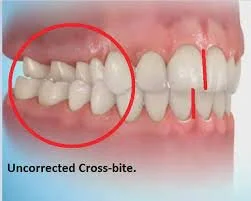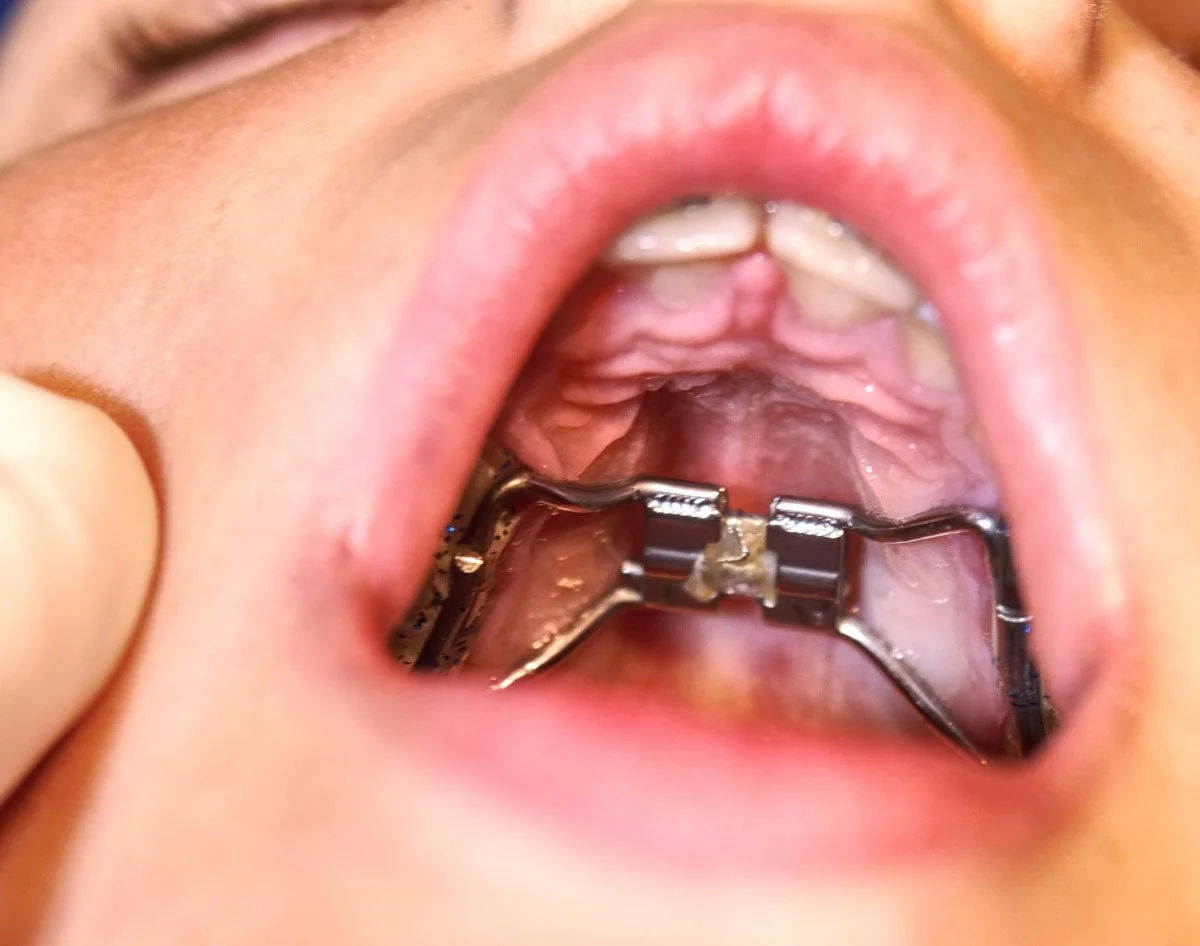My child needs an expander. What does this mean?
An expander is an orthodontic appliance that is worn across the roof of the mouth. It is recommended when the width of the top jaw is smaller than the width of the lower teeth, such that the teeth don’t fit together in the right way.
When the teeth bite together at the back, we expect to see the upper teeth over lapping the lower teeth like the lid of a box. When the upper teeth sit inside the lower teeth, this is called a crossbite and requires correction to normalise growth, to eliminate the possibility of the teeth wearing and to enhance smile aesthetics.
The solution is to broaden the upper jaw, and this is achieved with a custom made expander. In younger children, the palate is in two halves and can be separated with the correct force applied in the optimal direction. As children grow up, the bones on each side of the palate begin to merge together, and by adulthood the bones are completely fused. Expansion in the late teens and beyond can still be achieved but often requires surgical intervention to separate the upper jaw from its surrounding bones. Hence, the best time to do expansion is between the ages of 8 and 15.
Expanders can be removable, or fixed into the mouth. The fixed expanders are either anchored to the bone via temporary anchorage devices, or anchored to the teeth. The screw of the expander is turned and each turn activates the expander to broaden out the width of the palate. This process happens over about six months and some over-expansion is achieved to increase the stability of the procedure.
At first the expander will take a bit of getting used to and your little one will find that there is excess saliva in their mouth for a day or so. Speaking will also be affected but this will also settle down after a few days. Some patients initially experience some irritation of the cheeks, tongue and gums and even a mild toothache. Excellent oral hygiene is required during the wear of an expander, as food and debris do become lodged.
One thing to expect during the expansion is a gap forming between the two front teeth. This occurs as the two halves of the palate broaden apart. This is expected and welcome, as it means the expander is working the way we want it to. It may look a little strange, but be assured the teeth will drift back together by themselves after you stop turning the screw.
Palatal expanders are a common treatment modality in orthodontics. At Olivia Rogers Orthodontics, expansion is recommended when indicated. Olivia is happy to discuss this procedure in more detail at your consultation or treatment planning appointment.


